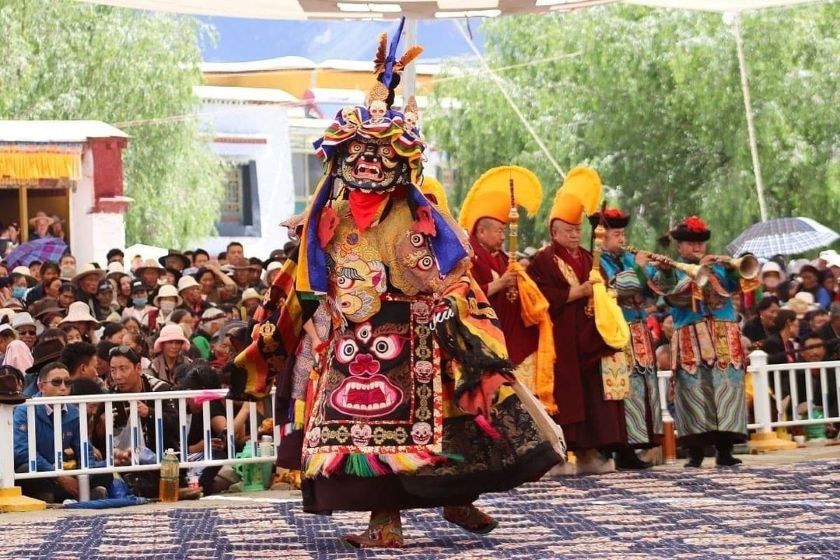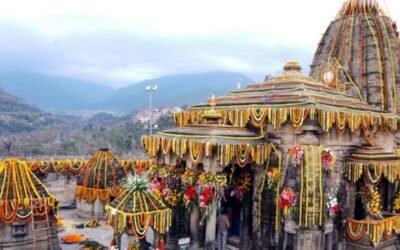📍 Location: Monasteries in Lahaul-Spiti (Key Monastery, Dhankar Gompa, Kaza, Tabo)
📅 Season: June–July (date varies by lunar Tibetan calendar)
A spiritual spectacle of masked dances, mantras, and ritual offerings to ward off evil and usher in harmony
🔱 What Is Tsheshu – The Festival of Auspicious Days
Tsheshu, meaning “auspicious date” in Tibetan, is celebrated across the trans-Himalayan belt to mark the spiritual cleansing of the environment and community. It centers on the Cham dance performances, mystical rituals, and invocation of protector deities through elaborate symbolism and sound.
🕉️ Monks don vibrant masks and robes to embody divine forces—wrathful and benevolent—dancing to drive away negativity, disease, and obstacles for the year ahead.
🪷 Rituals That Echo Across Ages
Held in monastic courtyards, Tsheshu unfolds as:
- Cham Dances: Highly stylized masked dances performed by lamas, representing gods defeating demons. Masks depict wrathful deities like Mahakala, Yamantaka, and Vajrapani.
- Sand Mandala Creation: Colored grains arranged into sacred patterns, destroyed at the end as a symbol of impermanence
- Fire Ceremonies: Ritual objects symbolizing negativity are burned or thrown into water
- Offerings & Blessings: Butter lamps, barley effigies (tormas), and sacred chants fill the air with spiritual resonance
🎭 A Theatrical Display of Enlightenment
Tsheshu is as much performance as it is prayer:
- Ornate Robes & Masks: Each dancer’s costume tells the story of the deity they invoke, combining skull caps, silken banners, and thunderbolt scepters
- Monastic Music: Cymbals, long horns (dungchen), and drums accompany the dances in trance-inducing cadence
- Public Participation: Lay villagers and pilgrims gather in festive attire, bowing, chanting, and throwing tsampa (barley flour) in the air for blessings
It’s a visual and spiritual drama where every gesture carries meaning.
🍵 Communal Bonding Beyond Ritual
The fair fosters warmth and connection:
- Butter Tea & Local Dishes: Shared among attendees, along with sweets and dried fruits
- Handicraft Markets: Locals sell prayer flags, masks, woollens, and symbolic trinkets
- Storytelling & Scripture Reading: Monks narrate tales from the Tantric texts, highlighting the origins of the dances and their protective power
Even children are taught the chants and meanings—a passing down of spiritual literacy.
✨ Why Tsheshu Is Timeless
Tsheshu isn’t just a fair—it’s a living mandala. It represents:
- The power of symbolic movement as transformation
- Collective cleansing for mind, body, and space
- A theatrical yet deeply serious expression of Buddhist esotericism in practice
It’s how Lahaul-Spiti purifies and realigns itself with the cosmos every summer.
🧭 Plan Your Visit
To witness Tsheshu in its fullest grace:
- Best Time: June–July, check Tibetan calendar for exact dates
- Where to Go: Key Monastery, Tabo Monastery, Dhankar Gompa, or Kaza during the dance cycle
- Travel Tip: Arrive early to secure viewing spots; bring warm clothes and be respectful of monastic protocol during rituals
- Stay Options: Homestays in Kaza and Tabo; limited guest rooms may be available in monasteries by prior permission




